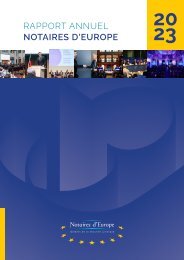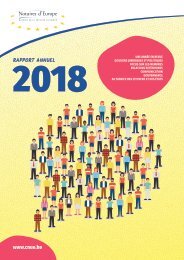CNUE - THE FIGHT AGAINST MONEY LAUNDERING
THE FIGHT AGAINST MONEY LAUNDERING - AN INTERNATIONAL COMBAT, A EUROPEAN CHALLENGE Money laundering is a multifaceted phenomenon. First of all, it is neither static nor temporary: it is constantly evolving, finding new resources in an ever-increasing financial globalisation and the evolution of technology. It is also a phenomenon that is inherently transnational, not only disregarding borders, but using them to blur the trail of successive financial transactions across the globe and obstructing the course of justice. Finally, it is a phenomenon that is on the increase. According to an estimate by the Financial Action Task Force (FATF), the annual volume of money laundering operations is estimated at between 2 and 5% of global GDP.
THE FIGHT AGAINST MONEY LAUNDERING - AN INTERNATIONAL COMBAT, A EUROPEAN CHALLENGE
Money laundering is a multifaceted phenomenon. First of all, it is neither static nor temporary: it is constantly evolving, finding new resources in an ever-increasing financial globalisation and the evolution of technology. It is also a phenomenon that is inherently transnational, not only disregarding borders, but using them to blur the trail of successive financial transactions across the globe and obstructing the course of justice. Finally, it is a phenomenon that is on the increase. According to an estimate by the Financial Action Task Force (FATF), the annual volume of money laundering operations is estimated at between 2 and 5% of global GDP.
You also want an ePaper? Increase the reach of your titles
YUMPU automatically turns print PDFs into web optimized ePapers that Google loves.
• It is a crime in appearance of secondorder
because it does not pursue the
antecedent fact producing the money - e.g.
drug trafficking - or the act of terrorism,
but another type of conduct that seeks to
favour or take advantage of the results of
the antecedent crime - in the specific case
of laundering - reintroducing the illegally
obtained profits in the legal and official
market: they want to make eye-catching and
ostentatious cash usable by means of its
conversion into legitimate account entries.
One might think that it is not as serious as
the predicate offence, but the fact is that
money laundering distorts the market and
establishes competitive advantages for those
who break the law and, on the contrary,
prejudices and disadvantages for those who
comply with them. That is why the legal
good protected in its pursuit is the proper
formation of assets.
impossibility of processing millions of data
physically sent on paper. It therefore evolved
into a different system, consisting of imposing
diligence on customer knowledge (knowing
your client), already used in the fight against
terrorism, and requiring individualised and
occasional communications when risk was
appreciated, but waiving the obligation in the
case of known customers. The success of
the system meant that financial laundering
was largely dismantled, banking secrecy was
greatly reduced and tax havens were left as
financial outlaws, the mere mention of which
ignites all the alarms.
These characteristics have shaped the way
we fight it. The FATF 40 recommendations
are a reflection of this. Two are of particular
interest:
Recommendation 1 on a risk-based
approach. Logically, the first thing was to
control the channels through which the
market flows, and particularly the financial
flows, run. Initially, an attempt was made
to combat money laundering by means
of a system of systematic reporting of all
transactions; but soon, already in Reagan’s
time, it was found to be ineffective due to the
31
















